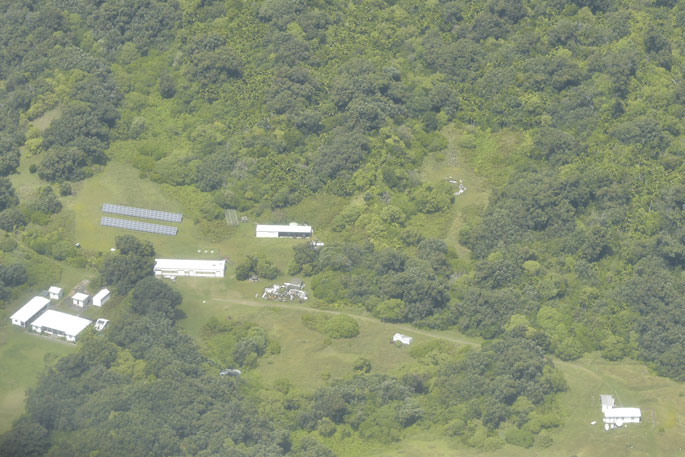No significant damage is being reported from Raoul Island following a 8.1 magnitude earthquake which triggered a tsunami warning in New Zealand.
The warning was cancelled later in the afternoon.
On Saturday, a Royal New Zealand Air Force P-3K2 Orion flew over Raoul Island, which is in the Kermadec region where the earthquake hit, allowing crew to check for damage from Friday's earthquake.
They saw landslips and water discolouration but no significant damage to equipment or structures.
The Royal New Zealand Navy ship HMNZS Canterbury has left for Raoul Island with MetService and GNS Science staff aboard to carry out essential tasks, including maintenance of critical weather and tsunami warning systems this week.
Maritime Component Commander Commodore Mat Williams says the re-supply mission, which left on Monday, was delayed a week and scaled back after Auckland went into COVID-19 alert level three.
The mission was now going ahead over the next week to carry out critical re-supply and maintenance tasks, he says.
'Friday's earthquakes and tsunami warnings were a reminder of how important these early warning systems are.
'We will continue to monitor the situation in the Kermadec Islands, including consulting with our colleagues in GNS Science.”
Commodore Williams said a BLAKE Expedition, comprising young people and teachers scheduled to go on the ship, was cancelled following the change in alert levels.
The trip was to have been the first major resupply mission since March 2020 when Department of Conservation staff left the island.
Instead, small teams from MetService and GNS will undertake critical tasks only and return with the ship to New Zealand.
A Navy Seasprite helicopter and a Royal New Zealand Air Force NH90 helicopter will fly staff, equipment and provisions to shore.
A RNZAF P-3K2 Orion flew over Raoul Island on Saturday, allowing crew to check for damage from Friday's earthquake. They saw landslips and water discolouration but no significant damage to equipment or structures.
GNS Science Remote Infrastructure Operations Coordinator Kris O'Brien says GeoNet technicians would carry out critical repairs to GNS equipment and attempt to improve power systems.
'Raoul Island's strategic location makes it one of New Zealand's most integral sites for monitoring earthquakes and tsunami. The two tsunami gauges located on Raoul will give us information about any tsunami caused by an earthquake and act as an early warning system.”
 Royal New Zealand Navy ship HMNZS Canterbury with Raoul Island in the background, taken during the re-supply mission in 2018.
Royal New Zealand Navy ship HMNZS Canterbury with Raoul Island in the background, taken during the re-supply mission in 2018.
Steve Knowles, MetService's Network Observations Manager, says MetService staff will carry out routine maintenance work on the automatic weather station and replace a 60-year-old weather balloon launching facility.
'It will improve safety for Raoul Island Department of Conversation staff who launch meteorological balloons on behalf of MetService. The balloon data contributes to global weather models and adds another layer of data to help in the tracking of tropical cyclones.
'MetService's Raoul Island Automatic Weather Station, which measures atmospheric pressure, rain fall, solar radiation, bright sunshine hours, temperature, wind speed and direction, will also be checked and serviced to ensure continued trouble-free operation and transmission of data back to our Wellington HQ.”
Two meteorological buoys recovered from Northland beaches will also be redeployed en route.
The free-drifting buys provide atmospheric pressure, sea surface temperature and ocean current data.



0 comments
Leave a Comment
You must be logged in to make a comment.